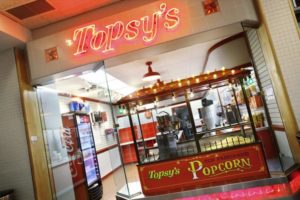Although low-alcohol beer has been around since the Middle Ages and Prohibition more recently, modern near-beer is a relatively recent occurrence. Is this brand-new beer without alcohol? Not quite.
Beer that is advertised as being alcohol-free frequently nevertheless contains alcohol, albeit in far lower amounts than conventional beer.
Regular beer typically has an alcohol by volume (ABV) content of 5% in 12 ounces, although some stronger beers have an ABV of 8% or even 12%.
Near beer, on the other hand, often has 0.5 percent alcohol. Some people in alcohol use disorder (AUD) recovery drink it, even though it’s probably not enough to make you drunk.
Some people don’t even want to drink non-alcoholic beer because they think it will merely lubricate an already precarious slope.
WHY ALCOHOLIC BEER CONTAINS ALCOHOL
Near beer still contains alcohol despite having a very low alcohol percentage.
A further step or two are necessary to lower the ABV.
The distilleries must heat the beer for a long time in one manner. Alcohol just boils away since it has a lower boiling point than water. The end product is often a beer with less alcohol but a strange, unpleasant flavor.
Another approach is to strain the mixture to remove the water and alcohol. Only water and alcohol can flow through the filter that is used for this, therefore this happens. The residual mixture is then diluted with water to produce the non-alcoholic beer.
The beer is flat or has no carbonation at this point, and it also tastes strange. As a result, several distilleries added extra sugar and carbon dioxide.
A VARIETY OF ALCOHOLIC-FREE BEER There are primarily two types of beer without alcohol:
non-alcoholic beer This must have an ABV of 0% or no alcohol at all that can be detected in the beverage. alcohol-free beer Despite the misleading name, this beverage may have an alcohol concentration of up to 0.05% per serving (12 fluid ounces). Anyone who has undergone alcohol addiction treatment should avoid drinking even 0% ABV near-beer since it could lead to a relapse.
Alcoholism and drug misuse are both chronic diseases that can never be cured. When something triggers the thought that taking a drink or a drug is a good idea, you can be sober for decades. These things are referred to as triggers and might be persons, places, or even senses like taste and smell.
A TRIGGER IS THE SMELL A real beer that has had some or all of the alcohol removed is called near beer. It still tastes and smells essentially the same as ordinary beer by design. Someone in recovery might start drinking alcohol again just from the fragrance. The nearly universal scent of hand sanitizer associated with COVID-19 may cause a relapse.
Even just the thought of drinking alcohol may act as a trigger. Dopamine is a field-good chemical that is more prevalent in the brain and is closely associated with addiction.
The brain’s pleasure center is taken over by substance use, which increases dopamine production while decreasing the brain’s natural capacity to do so. Dopamine produces a contented and pleasurable mood.
You build up a tolerance to drugs that make your brain release dopamine when you use them more frequently. Sooner or later, more of the drug will be required to generate the same quantity of dopamine. This creates a vicious cycle where you require increasing amounts of that chemical to feel normal.
: SAME CHARACTERS, DIFFERENT TASTE
The setting in which you are enjoying nonalcoholic beer is another problem. You’ll frequently look for a nonalcoholic beer in places where you’d look for alcoholic beer. Going to events or places where both types of beer are readily available is necessary.
Worse still, unless you have excellent friends, nobody will refuse to offer you a regular beer or a stronger alcoholic beverage. Therefore, as soon as your cravings start, you’ll rapidly fall back into the vicious cycle of drinking.
Relapse is prevalent among alcoholics and those who abuse other substances. In less than four years, 90% of patients will recur. Yes, you are statistically more likely to relapse than to make a full recovery.
Even while it may seem all gloom and doom, it is actually not that bad. Many of those 90% will bounce back. Just like with smoking, sometimes it takes more than one attempt to stop.
However, it is advisable to avoid places like bars and situations like non-alcoholic beer that cause cravings.
To maintain sobriety, AVOID NON-ALCOHOLIC BEER. Brews that resemble alcoholic beverages and nonalcoholic beer, according to Dr. Friedbert Weiss of the Scripps Research Institute, are stepping stones to relapse . It’s better to stay away from them as well as the locations and people you drank in or with.
Patrick Bailey is a professional writer that focuses primarily on topics related to mental health, addiction, and living in recovery. He makes an effort to stay up to date on the most recent developments in the fields of addiction and mental health, and he enjoys writing about these subjects to reduce the stigma attached to them.
Credits for the main image: TheCozyCoffee







